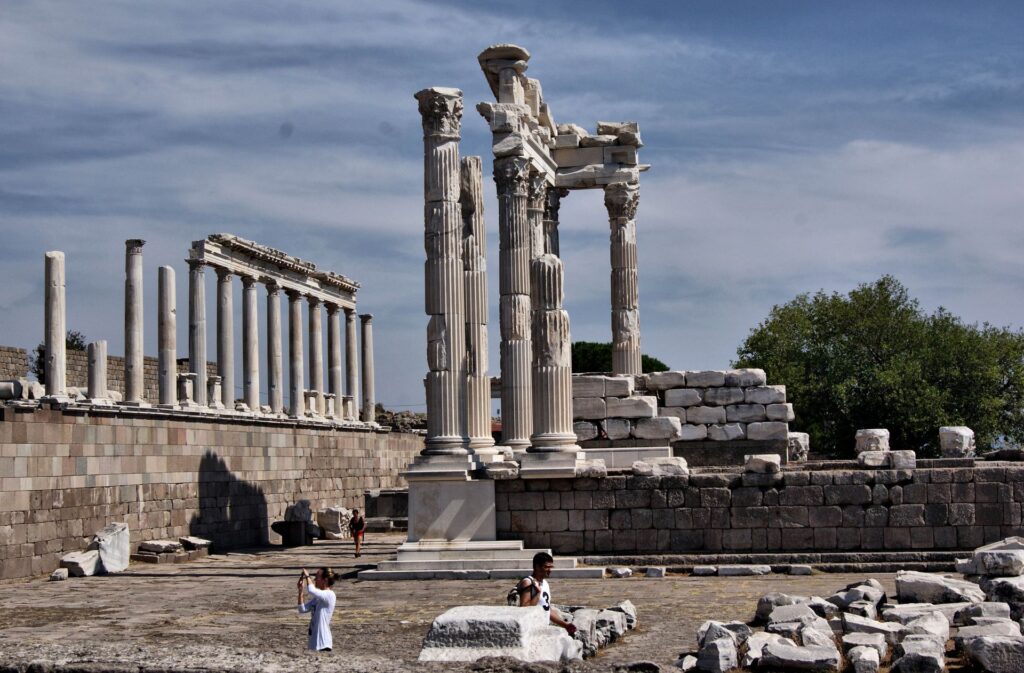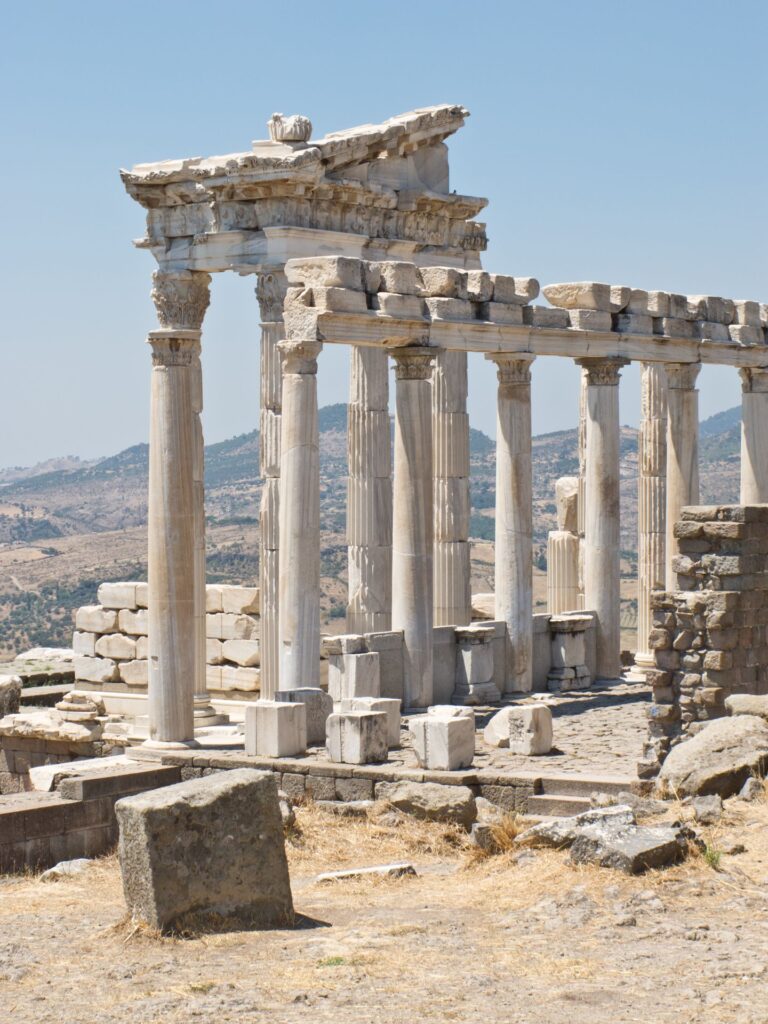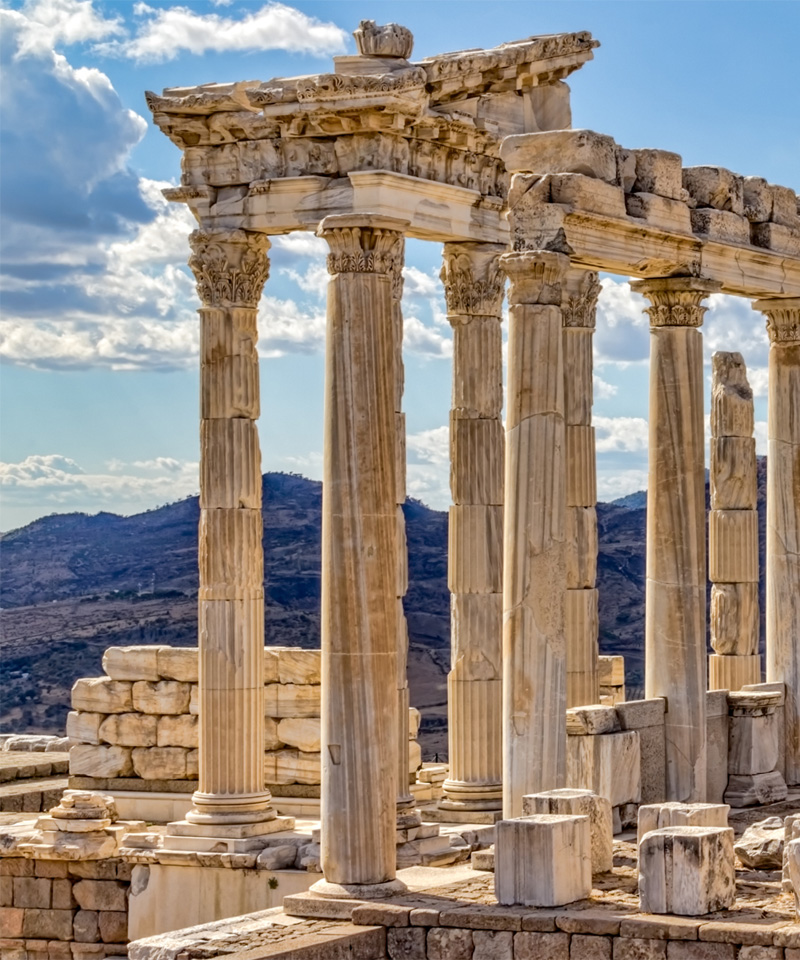Pergamon had been founded in the Hellenistic period, ca. 280 BCE, as the capital city of local dynastic kings known at the Attalids. Attalus I (from whom the dynasty takes its name) was actually the third ruler, from and it was during his reign that Pergamon began to develop close alliances to Rome, then just beginning its territorial expansion in the east. It appears that the Pergamenes sided with Rome against both the Carthagenians and the Seleucids. In addition, Rome assisted and sanctioned Pergamon’s territorial claims over the region of Galatia.
The great Altar of Zeus was erected after the defeat of the Galatians by Eumenes II. The city also boasted one of the most famous libraries of the ancient world, also built under Eumenes II. The wealth and prestige of the dynasty is reflected by the fact that the great Stoa of Attalus in the Athenian agora. But in 133 BC, the last member of the dynasty, Attalus III bequeathed the kingdom and its territories to Rome, and thus it became the first and most favored Roman province of the Greek east for the next two centuries. For much of this early period, Pergamon served as capital of the Roman Province of Asia.
The city has proper cascades down the hill from the spectacular acropolis to the plain below. During the first and second centuries BC, Pergamon was also famous for its extensive hospital and healing sanctuary dedicated to the god Asclepius. It stood over half a mile from the acropolis and the main portions of the city, to which it was attached by a paved and colonnaded processional way. The sanctuary of Asclepius covered nearly 154,000 square feet and contained temples, sanctuaries, baths, spa, springs, exercise rooms, library, a small theater, and more. It served not only as hospital but also as social and religious center to the city. In Roman times, the city’s chief symbol depicted in art and on coins was the god Asclepius. The doctor Galen was from Pergamon, and we also hear much of it from the travelogs and writings of Aelius Aristides and others. Other than the singular references in Revelation, however, there is not much other indication of the presence of either Jews or Christians in the city prior to the period of Constantine. But given the city’s prominence in provincial politics and trade, it is likely that the city was frequented by many visitors from diverse religious and ethnic backgrounds. Its fame as a healing center made it especially popular during the two great plagues that hit the eastern Roman empire in the second and third centuries CE.






